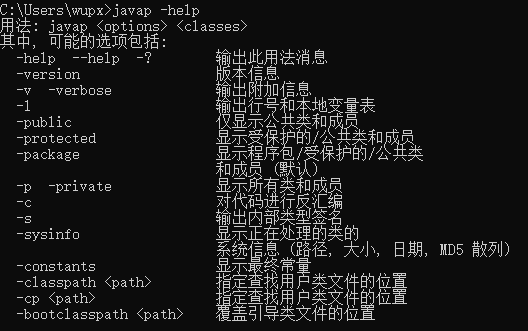在阅读《阿里巴巴Java开发手册》时,发现有一条关于整型包装类对象之间值比较的规约,具体内容如下:
这条建议非常值得大家关注, 而且该问题在 Java 面试中十分常见。
还需要思考以下几个问题:
- 如果不看《阿里巴巴Java开发手册》,如何知道 Integer var = ? 会缓存 -128 到 127 之间的赋值?
- 为什么会缓存这个范围的赋值?
- 如何学习和分析类似的问题?
Integer 缓存问题分析
先看下面的示例代码,并思考该段代码的输出结果:
public class IntegerTest {
public static void main(String[] args) {
Integer a = 100, b = 100, c = 666, d = 666;
System.out.println(a == b);
System.out.println(c == d);
}
}
通过运行代码可以得到答案,程序输出的结果分别为: true , false。
那么为什么答案是这样?
结合《阿里巴巴Java开发手册》的描述很多人可能会回答:因为缓存了 -128 到 127 之间的数值,就没有然后了。
那么为什么会缓存这一段区间的数值?缓存的区间可以修改吗?其它的包装类型有没有类似缓存?
接下来,让我们一起进行分析。
源码分析法
首先我们可以通过源码对该问题进行分析。
我们知道,Integer var = ? 形式声明变量,会通过 java.lang.Integer#valueOf(int) 来构造 Integer 对象。
怎么知道会调用 valueOf() 方法呢?
大家可以通过打断点,运行程序后会调到这里。
先看 java.lang.Integer#valueOf(int) 源码:
/**
* Returns an {@code Integer} instance representing the specified
* {@code int} value. If a new {@code Integer} instance is not
* required, this method should generally be used in preference to
* the constructor {@link #Integer(int)}, as this method is likely
* to yield significantly better space and time performance by
* caching frequently requested values.
*
* This method will always cache values in the range -128 to 127,
* inclusive, and may cache other values outside of this range.
*
* @param i an {@code int} value.
* @return an {@code Integer} instance representing {@code i}.
* @since 1.5
*/
public static Integer valueOf(int i) {
if (i >= IntegerCache.low && i <= IntegerCache.high)
return IntegerCache.cache[i + (-IntegerCache.low)];
return new Integer(i);
}
通过源码可以看出,如果用 Ineger.valueOf(int) 来创建整数对象,参数大于等于整数缓存的最小值( IntegerCache.low )并小于等于整数缓存的最大值( IntegerCache.high), 会直接从缓存数组 (java.lang.Integer.IntegerCache#cache) 中提取整数对象;否则会 new 一个整数对象。在 JDK9 直接把 new 的构造方法标记为 deprecated,推荐使用 valueOf(),合理利用缓存,提升程序性能。
那么这里的缓存最大和最小值分别是多少呢?
从上述注释中我们可以看出,最小值是 -128, 最大值是 127。
那么为什么会缓存这一段区间的整数对象呢?
通过注释我们可以得知:如果不要求必须新建一个整型对象,缓存最常用的值(提前构造缓存范围内的整型对象),会更省空间,速度也更快。
这给我们一个非常重要的启发:
如果想减少内存占用,提高程序运行的效率,可以将常用的对象提前缓存起来,需要时直接从缓存中提取。
那么我们再思考下一个问题: Integer 缓存的区间可以修改吗?
通过上述源码和注释我们还无法回答这个问题,接下来,我们继续看 java.lang.Integer.IntegerCache 的源码:
/**
* Cache to support the object identity semantics of autoboxing for values between
* -128 and 127 (inclusive) as required by JLS.
*
* The cache is initialized on first usage. The size of the cache
* may be controlled by the {@code -XX:AutoBoxCacheMax=<size>} option.
* During VM initialization, java.lang.Integer.IntegerCache.high property
* may be set and saved in the private system properties in the
* sun.misc.VM class.
*/
private static class IntegerCache {
static final int low = -128;
static final int high;
static final Integer cache[];
static {
// high value may be configured by property
int h = 127;
String integerCacheHighPropValue =
sun.misc.VM.getSavedProperty("java.lang.Integer.IntegerCache.high");
// 省略其它代码
}
// 省略其它代码
}
通过 IntegerCache 代码和注释我们可以看到,最小值是固定值 -128, 最大值并不是固定值,缓存的最大值是可以通过虚拟机参数 -XX:AutoBoxCacheMax=} 或 -Djava.lang.Integer.IntegerCache.high= 来设置的,未指定则为 127。
因此可以通过修改这两个参数其中之一,让缓存的最大值大于等于 666。
如果作出这种修改,示例的输出结果便会是: true,true。
学到这里是不是发现,对此问题的理解和最初的想法有些不同呢?
这段注释也解答了为什么要缓存这个范围的数据:
是为了自动装箱时可以复用这些对象 ,这也是 JLS2 的要求。
我们可以参考 JLS 的 Boxing Conversion 部分的相关描述。
If the valuepbeing boxed is an integer literal of type intbetween -128and 127inclusive (§3.10.1), or the boolean literal trueorfalse(§3.10.3), or a character literal between '\u0000'and '\u007f'inclusive (§3.10.4), then let aand bbe the results of any two boxing conversions of p. It is always the case that a==b.
在 -128 到 127 (含)之间的 int 类型的值,或者 boolean 类型的 true 或 false, 以及范围在’\u0000’和’\u007f’ (含)之间的 char 类型的数值 p, 自动包装成 a 和 b 两个对象时, 可以使用 a == b 判断 a 和 b 的值是否相等。
反编译法
那么究竟 Integer var = ? 形式声明变量,是不是通过 java.lang.Integer#valueOf(int) 来构造 Integer 对象呢? 总不能都是猜测 N 个可能的函数,然后断点调试吧?
如果遇到其它类似的问题,没人告诉我底层调用了哪个方法,该怎么办?
这类问题,可以通过对编译后的 class 文件进行反编译来查看。
首先编译源代码:javac IntegerTest.java
然后需要对代码进行反编译,执行:javap -c IntegerTest
如果想了解 javap 的用法,直接输入 javap -help 查看用法提示(很多命令行工具都支持 -help 或 --help 给出用法提示)。
反编译后,我们得到以下代码:
Compiled from "IntegerTest.java"
public class com.wupx.demo.IntegerTest {
public com.wupx.demo.IntegerTest();
Code:
0: aload_0
1: invokespecial #1 // Method java/lang/Object."<init>":()V
4: return
public static void main(java.lang.String[]);
Code:
0: bipush 100
2: invokestatic #2 // Method java/lang/Integer.valueOf:(I)Ljava/lang/Integer;
5: astore_1
6: bipush 100
8: invokestatic #2 // Method java/lang/Integer.valueOf:(I)Ljava/lang/Integer;
11: astore_2
12: sipush 666
15: invokestatic #2 // Method java/lang/Integer.valueOf:(I)Ljava/lang/Integer;
18: astore_3
19: sipush 666
22: invokestatic #2 // Method java/lang/Integer.valueOf:(I)Ljava/lang/Integer;
25: astore 4
27: getstatic #3 // Field java/lang/System.out:Ljava/io/PrintStream;
30: aload_1
31: aload_2
32: if_acmpne 39
35: iconst_1
36: goto 40
39: iconst_0
40: invokevirtual #4 // Method java/io/PrintStream.println:(Z)V
43: getstatic #3 // Field java/lang/System.out:Ljava/io/PrintStream;
46: aload_3
47: aload 4
49: if_acmpne 56
52: iconst_1
53: goto 57
56: iconst_0
57: invokevirtual #4 // Method java/io/PrintStream.println:(Z)V
60: return
}
可以明确得 “看到” 这四个 ``Integer var = ? 形式声明的变量的确是通过 java.lang.Integer#valueOf(int) 来构造 Integer` 对象的。
接下来对编译后的代码进行详细分析,如果看不懂可略过:
根据《Java Virtual Machine Specification : Java SE 8 Edition》3,后缩写为 JVMS , 第 6 章 虚拟机指令集的相关描述以及《深入理解 Java 虚拟机》4 414-149 页的 附录 B “虚拟机字节码指令表”。 我们对上述指令进行解读:
偏移为 0 的指令为:bipush 100 ,其含义是将单字节整型常量 100 推入操作数栈的栈顶;
偏移为 2 的指令为:invokestatic #2 // Method java/lang/Integer.valueOf:(I)Ljava/lang/Integer; 表示调用一个 static 函数,即 java.lang.Integer#valueOf(int);
偏移为 5 的指令为:astore_1 ,其含义是从操作数栈中弹出对象引用,然后将其存到第 1 个局部变量 Slot 中;
偏移 6 到 25 的指令和上面类似;
偏移为 30 的指令为 aload_1 ,其含义是从第 1 个局部变量 Slot 取出对象引用(即 a),并将其压入栈;
偏移为 31 的指令为 aload_2 ,其含义是从第 2 个局部变量 Slot 取出对象引用(即 b),并将其压入栈;
偏移为 32 的指令为 if_acmpn,该指令为条件跳转指令,if_ 后以 a 开头表示对象的引用比较。
由于该指令有以下特性:
if_acmpeq 比较栈两个引用类型数值,相等则跳转
if_acmpne 比较栈两个引用类型数值,不相等则跳转
由于 Integer 的缓存问题,所以 a 和 b 引用指向同一个地址,因此此条件不成立(成立则跳转到偏移为 39 的指令处),执行偏移为 35 的指令。
偏移为 35 的指令: iconst_1,其含义为将常量 1 压栈( Java 虚拟机中 boolean 类型的运算类型为 int ,其中 true 用 1 表示,详见 2.11.1 数据类型和 Java 虚拟机。
然后执行偏移为 36 的 goto 指令,跳转到偏移为 40 的指令。
偏移为 40 的指令:invokevirtual #4 // Method java/io/PrintStream.println:(Z)V。
可知参数描述符为 Z ,返回值描述符为 V。
根据 4.3.2 字段描述符 ,可知 FieldType 的字符为 Z 表示 boolean 类型, 值为 true 或 false。
根据 4.3.3 字段描述符 ,可知返回值为 void。
因此可以知,最终调用了 java.io.PrintStream#println(boolean) 函数打印栈顶常量即 true。
然后比较执行偏移 43 到 57 之间的指令,比较 c 和 d, 打印 false 。
执行偏移为 60 的指令,即 retrun ,程序结束。
可能有些朋友会对反编译的代码有些抵触和恐惧,这都是非常正常的现象。
我们分析和研究问题的时候,看懂核心逻辑即可,不要纠结于细节,而失去了重点。
一回生两回熟,随着遇到的例子越来越多,遇到类似的问题时,会喜欢上 javap 来分析和解决问题。
如果想深入学习 java 反编译,强烈建议结合官方的 JVMS 或其中文版:《Java 虚拟机规范》这本书进行拓展学习。
Long 的缓存问题分析
学习的目的之一就是要学会举一反三,因此对 Long 也进行类似的研究,探究两者之间有何异同。
源码分析
类似的,接下来分析 java.lang.Long#valueOf(long) 的源码:
/**
* Returns a {@code Long} instance representing the specified
* {@code long} value.
* If a new {@code Long} instance is not required, this method
* should generally be used in preference to the constructor
* {@link #Long(long)}, as this method is likely to yield
* significantly better space and time performance by caching
* frequently requested values.
*
* Note that unlike the {@linkplain Integer#valueOf(int)
* corresponding method} in the {@code Integer} class, this method
* is <em>not</em> required to cache values within a particular
* range.
*
* @param l a long value.
* @return a {@code Long} instance representing {@code l}.
* @since 1.5
*/
public static Long valueOf(long l) {
final int offset = 128;
if (l >= -128 && l <= 127) { // will cache
return LongCache.cache[(int)l + offset];
}
return new Long(l);
}
发现该函数的写法和 Ineger.valueOf(int) 非常相似。
我们同样也看到, Long 也用到了缓存。 使用 Ineger.valueOf(int) 构造 Long 对象时,值在 [-128, 127] 之间的 Long 对象直接从缓存对象数组中提取。
而且注释同样也提到了:缓存的目的是为了提高性能。
但是通过注释我们发现这么一段提示:
Note that unlike the {@linkplain Integer#valueOf(int) corresponding method} in the {@code Integer} class, this method is not required to cache values within a particular range.
注意:和 Ineger.valueOf(int) 不同的是,此方法并没有被要求缓存特定范围的值。
这也正是上面源码中缓存范围判断的注释为何用 // will cache 的原因(可以对比一下上面 Integer 的缓存的注释)。
因此我们可知,虽然此处采用了缓存,但应该不是 JLS 的要求。
那么 Long 类型的缓存是如何构造的呢?
我们查看缓存数组的构造:
private static class LongCache {
private LongCache(){}
static final Long cache[] = new Long[-(-128) + 127 + 1];
static {
for(int i = 0; i < cache.length; i++)
cache[i] = new Long(i - 128);
}
}
可以看到,它是在静态代码块中填充缓存数组的。
反编译
同样地我们也编写一个示例片段:
public class LongTest {
public static void main(String[] args) {
Long a = -128L, b = -128L, c = 666L, d = 666L;
System.out.println(a == b);
System.out.println(c == d);
}
}
编译源代码: javac LongTest.java
对编译后的类文件进行反编译: javap -c LongTesg
得到下面反编译的代码:
Compiled from "LongTest.java"
public class com.wupx.demo.LongTest {
public com.wupx.demo.LongTest();
Code:
0: aload_0
1: invokespecial #1 // Method java/lang/Object."<init>":()V
4: return
public static void main(java.lang.String[]);
Code:
0: ldc2_w #2 // long -128l
3: invokestatic #4 // Method java/lang/Long.valueOf:(J)Ljava/lang/Long;
6: astore_1
7: ldc2_w #2 // long -128l
10: invokestatic #4 // Method java/lang/Long.valueOf:(J)Ljava/lang/Long;
13: astore_2
14: ldc2_w #5 // long 666l
17: invokestatic #4 // Method java/lang/Long.valueOf:(J)Ljava/lang/Long;
20: astore_3
21: ldc2_w #5 // long 666l
24: invokestatic #4 // Method java/lang/Long.valueOf:(J)Ljava/lang/Long;
27: astore 4
29: getstatic #7 // Field java/lang/System.out:Ljava/io/PrintStream;
32: aload_1
33: aload_2
34: if_acmpne 41
37: iconst_1
38: goto 42
41: iconst_0
42: invokevirtual #8 // Method java/io/PrintStream.println:(Z)V
45: getstatic #7 // Field java/lang/System.out:Ljava/io/PrintStream;
48: aload_3
49: aload 4
51: if_acmpne 58
54: iconst_1
55: goto 59
58: iconst_0
59: invokevirtual #8 // Method java/io/PrintStream.println:(Z)V
62: return
}
从上述代码中发现 Long var = ? 的确是通过 java.lang.Long#valueOf(long) 来构造对象的。
事实上,除 Float 和 Double 外,其他包装数据类型都会缓存,6 个包装类直接赋值时,就是调用对应包装类的静态工厂方法 valueOf()。
各个包装类的缓存区间如下:
- Boolean:使用静态 final 变量定义,valueOf() 就是返回这两个静态值
- Byte:表示范围是 -128 ~ 127,全部缓存
- Short:表示范围是 - 32768 ~ 32767,缓存范围是 -128~127
- Character:表示范围是 0 ~ 65535,缓存范围是 0~127
- Long:表示范围是 [-2^63 ~ 2^63-1],缓存范围是 -128~127
- Integer:表示范围是 [-2^31 ~ 2^31-1],缓存范围是 -128~127,但它是唯一可以修改缓存范围的包装类,在 VM options 加入参数 -XX:AutoBoxCacheMax=6666,即可设置最大缓存值为 6666
另外,在选择使用包装类还是基本数据类型时,推荐使用如下方式:
- 所有的 POJO 类属性必须使用包装数据类型
- RPC 方法的返回值和参数必须使用包装数据类型
- 所有的局部变量推荐使用基本数据类型
总结
本文首先对阿里巴巴Java开发手册中强制要求整型包装类对象值用 equals 方法比较作了简单介绍,并通过源码分析法、阅读 JLS 和 JVMS、使用反编译法,对 Integer 和 Long 缓存的目的和实现方式问题进行了深入分析。
让大家能够用更丰富的手段来学习知识和分析问题,通过对缓存目的的思考来学到更通用和本质的东西。
还介绍了其他包装类型的缓存范围,以及包装类和基本数据类型的推荐使用场景。
参考
《Java开发手册》华山版
《码出高效:Java开发手册》
《深入理解Java虚拟机》
共同学习,写下你的评论
评论加载中...
作者其他优质文章






